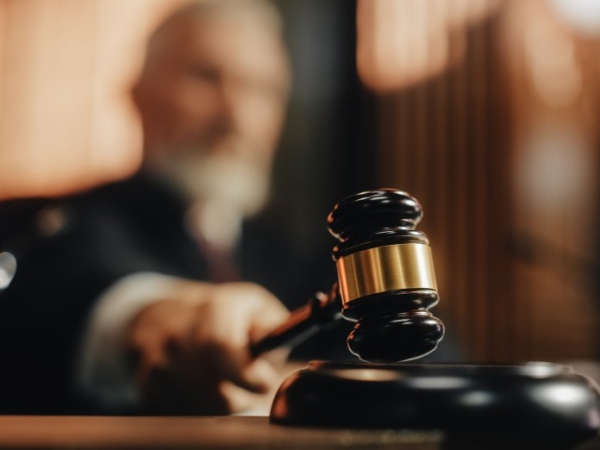Internet Archive reaches “confidential resolution” with major labels over the Great 78 Project — what it means
On September 15, 2025, the long-running and closely watched legal fight between the Internet Archive and several major record labels quietly came to an end. In a short filing to the U.S. District Court in San Francisco both sides told the court they had “settled this matter” and asked the judge to hold the case while they implement the deal — and the Internet Archive followed with a terse blog post saying the parties “have reached a confidential resolution of all claims” and that there would be no further public comment.
The dispute, formally docketed as UMG Recordings, Inc. v. Internet Archive, grew out of the Internet Archive’s Great 78 Project — an ambitious effort to digitize fragile shellac 78-rpm discs from the early 20th century and make those recordings publicly accessible for research and listening. Labels, including Universal Music Group and Sony Music (along with other plaintiffs named over time) argued that the Archive went far beyond preservation and effectively operated as an unauthorized digital distribution platform, seeking hundreds of millions of dollars in damages. The Archive defended the effort as preservation and fair use, a digital analogue to what libraries and museums have done for generations.
Below I unpack what happened, why it mattered to archivists, artists, and the music industry, and what the confidential settlement may — and may not — mean going forward.
A short history: Great 78, the lawsuit, and the build-up
The Great 78 Project (started publicly in 2017) invited donors to send in old 78-rpm discs — shellac records from roughly the 1890s through the 1950s — which the Archive digitized and posted online with metadata for researchers and the public. To preservationists, the project was straightforward cultural stewardship: 78s are physically fragile, playback equipment is rare, and many recordings risked being lost. The Archive built a searchable collection that quickly became a reference point for historians, collectors, and musicians.
In August 2023 a coalition of major labels filed suit, alleging the Archive had uploaded thousands of recordings without authorization and was essentially operating an illegal record store; early estimates of claimed damages varied, with headlines citing sums in the hundreds of millions of dollars. The litigation gained public attention not only because of the dollar amounts involved, but because it pitted an institution that many see as a public-benefit library against the modern commercial music industry. In 2024, a federal judge in California rejected part of the Archive’s attempt to dismiss the case, meaning the Archive would have to answer many of the labels’ claims in court — a major escalation that set the stage for protracted litigation.
What the parties argued
The labels’ central claim was straightforward: many of the recordings in question remain protected by copyright (through recordings and/or publishing rights), and the Archive’s posting and streaming of those tracks constituted unauthorized distribution and public performance. Label filings described the Archive’s site as offering content in a way that competed with commercial services — a particularly sensitive charge in an industry where licensing and controlled distribution are the primary ways rights holders monetize recordings.
The Internet Archive answered with familiar library and preservation defenses. It emphasized the public-interest character of its work, the historical and scholarly value of making rare recordings accessible, and asserted that a broad fair-use defense applied in many instances. The Archive also framed itself as a nonprofit library doing what libraries do: digitize, catalog and make rare materials available for research and posterity. For many legal observers, the dispute raised classic questions about how copyright exceptions for libraries and archives apply in a digital world — particularly when material is made available outside a single reading room and can be streamed worldwide.
The public reaction: artists and archivists take sides
The case drew a surprising wave of grassroots support for the Archive. Hundreds — by some counts over 600 — musicians and cultural figures signed open letters and statements urging the labels to drop the lawsuit, arguing that the Archive’s work preserved musical heritage rather than undercutting living artists. Organizations such as Fight for the Future amplified the campaign, and prominent musicians including Tegan and Sara, Kathleen Hanna and Amanda Palmer publicly backed the Archive’s preservation mission. Preservationists, music historians and some independent labels likewise warned that a successful suit could chill efforts to digitize and preserve rare audio artifacts across the cultural sector.
On the other side, many in the industry framed the suit as an effort to defend artists’ and rights-holders’ control over how their recordings are used and monetized. Labels argued that when copyrighted works are uploaded and streamed without licenses, creators and rights owners lose both revenue and bargaining power.
Why the confidential settlement matters (and why we still don’t know much)
Confidential settlements are common in civil litigation, particularly when large organizations and reputational risk are in play. But confidentiality also leaves a vacuum where clarity would help policymakers, archivists and rights holders navigate similar disputes in the future.
Because the court filing and the Archive’s blog announced only that a confidential resolution was reached, we do not yet know key things people were watching for:
• Did the Archive remove particular recordings or portions of the Great 78 collection as part of the deal? Several outlets reported that some recordings had been taken down during litigation; whether that removal will be permanent or conditional is unclear.
• Were royalties, licenses or monetary payments part of the settlement? If so, to whom and under what standards? A settlement could involve payments, licensing deals for specific titles, or procedural changes to how the Archive ingests and posts materials — but the public record is silent.
• Does the agreement create any precedent, industry standard or pathway for libraries to lawfully digitize fragile recordings for public access? Because the settlement terms will be confidential, it’s unlikely we’ll get a clear legal rule out of this case in the near term.
It’s worth noting that confidentiality benefits both sides in practical ways. Labels can assert their rights without establishing a publicly cited legal victory or admitting fault. The Archive can avoid an adverse judgment that might limit nonprofit archiving activities or require expensive compliance regimes. But for scholars, archivists, librarians, and smaller cultural institutions looking for guidance, the secrecy is frustrating — it denies them clarity about where the line is drawn between permitted preservation and actionable infringement.
Legal and policy consequences to watch
Even with the settlement sealed, a few important consequences are likely to ripple outward:
-
Operational caution among digital archives. Nonprofit archives, small museums, and historical societies that had considered large-scale digitization projects may proceed more cautiously. The threat of a major label lawsuit — and the prospect of multimillion-dollar claims — shifts risk calculations for organizations with limited legal budgets.
-
Pressure to negotiate licensing pathways. One possible long-term effect is the emergence of negotiated frameworks that allow archives to digitize and provide access while ensuring rights holders receive compensation or control mechanisms. If the economics can be clarified with a standard license or model, it could enable preservation while protecting creators’ rights.
-
Continued public debate about fair use online. The case underscored unresolved questions about how fair use applies to noncommercial preservation and remote access. Lawmakers, courts and policy advocates may use the episode to push for statutory safe harbors or clearer library exceptions adapted for digital distribution.
-
Artist and public mobilization remain influential. The strong public show of support for the Archive suggests that artists and advocacy groups can shape the social narrative around copyright enforcement, potentially influencing how labels approach enforcement in public forums.
What journalists and advocates are saying
Major outlets — from Reuters to Rolling Stone and specialist music trade press — reported the settlement but emphasized the confidentiality of terms and the continuing ambiguity about what the deal actually changes on the ground. Some trade stories focused on procedural details (who sued, which labels joined, the timeline of filings), while advocacy outlets highlighted the perceived victory for preservation and the power of public pressure. Others stressed that the settlement merely pauses a legal fight without resolving the broader policy questions at the heart of the dispute.
A cautious, conditional win — but not a legal precedent
For supporters of the Internet Archive, the settlement represents a practical win: the long, expensive litigation is halted and the Archive avoids a final adverse ruling that could have constrained nonprofit archiving practices. For rights holders, the settlement may resolve a grievance and could include protections or compensations that labels consider necessary to sustain the broader music market. But because the terms are secret, neither side can claim a public legal vindication or a definitive policy victory.
This outcome leaves license-seekers, legal scholars and cultural institutions with mixed feelings. The immediate litigation smoke clears, but the legal fog remains: until or unless settlement terms are publicly disclosed or similar litigation produces a binding court decision, the fundamental rules governing large-scale digitization, remote access, and preservation under copyright law remain contested and unsettled.
What to look for next
If you’re following the story, here are a few things to watch for in the coming weeks and months:
• Any subsequent court filings that reflect dismissal or a final order tied to the settlement (those filings occasionally list limited details about compliance deadlines).
• Public statements by the Internet Archive or the recording industry if either side later decides to explain elements of the deal (unlikely but possible if the settlement includes a standardized license or program that could be publicized).
• Policy or legislative activity. The case has already generated discussion among librarians and cultural policy advocates about whether statutory fixes are needed to protect preservation while respecting rights holders.
• Similar litigation or private negotiations between other archives and rights holders. Parties often use confidential settlements as templates for private licensing programs; keep an eye on industry press for any such developments.
Final thoughts
The Internet Archive’s Great 78 Project touched a raw nerve at the intersection of cultural heritage and modern copyright economics. The confidential settlement announced in mid-September 2025 draws a line under this particular courtroom drama, but it doesn’t resolve the more complex questions about how society should balance the preservation of fragile, historically valuable materials with the legitimate economic and moral claims of rights holders.
Whether that balance will be struck through private deals, a new licensing marketplace, court precedent down the line, or legislative action remains to be seen. For now, archivists and historians breathe a collective sigh of relief that one of the most prominent digital preservation projects in recent years will continue to exist — even as the community presses for clearer, more sustainable rules that let libraries and archives do their work without risking ruinous litigation.


